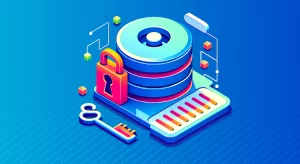
Postgres Access Control

Databases store important information. Access controls are necessary to prevent unauthorized access and misuse. It is important to have these controls in place. PostgreSQL provides features to help you secure your data effectively. In this article, we will explore the world of Postgres access control and how you can leverage its capabilities to safeguard your information.
Definition of Access Control
Access control in database security involves allowing or denying access to resources based on user roles and privileges. Access control in PostgreSQL ensures only authorized users can view, edit, or delete data in the database.
This helps maintain the confidentiality, integrity, and availability of your data, reducing the risk of security incidents and compliance violations.
The Significance of Postgres Access Control
Implementing Postgres access control is essential for several reasons. First and foremost, it helps protect your sensitive data from falling into the wrong hands. By controlling who can see which data and how much, you can reduce the chance of data leaks and unauthorized sharing.
Access control helps you comply with regulations such as GDPR, HIPAA, and PCI DSS. It controls who can access data, ensuring that only authorized individuals can view sensitive information. This helps organizations meet industry standards and regulations.
Moreover, Postgres access control allows you to enforce the principle of least privilege, ensuring that users have access to only the data they need to perform their tasks. This lowers the risk of security issues because a hacked user account will only be able to see some information.
By using detailed access rules, you can balance security and usability, allowing your organization to work well while staying secure.
PostgreSQL Roles: The Foundation of Access Control
At the heart of Postgres access control lies the concept of roles. A role in PostgreSQL is essentially a user account that can be assigned specific privileges and permissions. Every user in the database has a role and can log in with their own credentials. PostgreSQL has different built-in roles like SUPERUSER, CREATEDB, and CREATEROLE that give different levels of control over the database.
Roles form the foundation of access control in PostgreSQL. By carefully defining roles and assigning appropriate privileges, you can create a granular and flexible access control system. You can make roles for different user groups or job functions in your organization, like administrators, managers, developers, and analysts. Each role can be granted specific privileges based on their responsibilities and the principle of least privilege.
Managing Role Membership
PostgreSQL provides a convenient way to manage role membership through the use of group roles. Instead of giving one person special rights, you can create a role for a group of people. They can be given the rights instead.
Managing permissions is easier when you add or remove users from a group role instead of changing each user’s privileges individually. This method allows for more efficient management of permissions. Instead of changing privileges for each user, you can simply modify the group role. This streamlines the process and saves time.
Group roles promote a more manageable and scalable approach to access control. As your organization grows and more people join, you can easily assign them to specific group roles. This ensures that they have the necessary permissions.
If a user’s job changes or they leave, you can remove them from the group role. This will prevent them from accessing important information.
Granting and Revoking Privileges
PostgreSQL has many privileges that can be given to roles, letting you manage access to different database objects and actions. Some common privileges include SELECT, INSERT, UPDATE, DELETE, and EXECUTE. You can assign privileges to roles based on their needs. This ensures that users only have access to the data and tools they need for their tasks.
Granting privileges in PostgreSQL is a straightforward process. The GRANT statement lets you give permissions to roles, deciding what database objects and actions they can access. For example, you can allow a role to access data from a certain table by giving them SELECT privilege. Similarly, you can grant INSERT, UPDATE, or DELETE privileges to enable roles to modify data within a table.
Revoking privileges is equally important to maintain a secure access control system. To remove a user’s privileges, use the REVOKE statement. This is necessary when their responsibilities change or they no longer need access to specific data. This makes sure that users only have access to what they need, which helps prevent unauthorized access and data breaches.
Implementing Row-Level Security
PostgreSQL has row-level security (RLS) in addition to role-based access control. RLS lets you control access to specific rows within a table. With RLS, you can define policies that determine which rows a user can access based on certain conditions. This adds extra security by making sure users can only see or change data they are allowed to access.
Row-level security helps control access to specific rows of data in a table. This is useful when different users or roles require access to the table. However, they should only be able to see certain data within the table.
In a multi-tenant application, each tenant can only access their own data. This applies even if all data is stored in the same table. You can make sure each tenant can only access their own data by setting RLS policies using a tenant ID column.
Implementing RLS in PostgreSQL involves creating security policies using the CREATE POLICY statement. You can create rules that determine when a user can view or change data in a table. These policies can be based on the user’s role, the content of the row, or any other relevant criteria. By combining RLS with role-based access control, you can achieve a fine-grained and secure access control system.
Auditing and Monitoring
To maintain a robust Postgres access control system, it is essential to implement auditing and monitoring mechanisms. PostgreSQL has detailed logging features. These features help you monitor database activities. They include login attempts, SQL statements, and changes to database objects.
By regularly reviewing these logs, you can detect suspicious activities, identify potential security breaches, and take appropriate actions to mitigate risks.
Auditing and monitoring help you gain visibility into your PostgreSQL environment, enabling you to identify and investigate security incidents in a timely manner. You can set up PostgreSQL to log certain events like failed logins, important operations, or access to sensitive data. Set up alerts and notifications to detect and respond to security threats before they happen by using predefined thresholds or patterns.
Regular security checks and scans can find weaknesses in your Postgres access control system, in addition to logging.
Regularly check who has access. Remove unnecessary access. Watch for unusual activity. This will keep your security strong and ensure your access controls work well.
Conclusion
Postgres access control is important for keeping your sensitive data safe from unauthorized access and misuse. You can make a detailed and flexible access control system for your organization by using roles, privileges, and row-level security.
Using strong access controls protects your data and ensures compliance with industry rules and standards. To keep your PostgreSQL environment secure, follow best practices. Review and update access privileges regularly. Use auditing and monitoring tools.
Remember, data security is an ongoing process that requires continuous attention and improvement. To keep your PostgreSQL databases secure, stay alert, adjust to new threats, and use the latest access control methods. This will help protect the confidentiality, integrity, and availability of your data.
Take control of your data security today and implement robust Postgres access control measures. Your organization’s important information needs top-notch protection. With the right approach, you can feel confident that your data is safe.
DataSunrise offers an advanced approach to access controls of any database, including Postgres. Contact our team to schedule a demo and discover how DataSunrise enhances your database security now.
